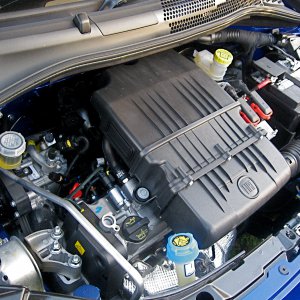I've just been reading up on some of these thread about the acceleration issues.
The Mrs 1.2 Panda Lounge (built Feb 14) has this flat spot issue.
The 63 plate 500S loaner (built ??) I have at the moment doesn't.
What I have noticed if you sit with the Panda idling, releasing or drepressing the clutch increases the RPM.
With the 500S, the clutch action has no effect on idle speed.
I know modern cars will often adjust idle when it detects a raising clutch to prevent a stall, my 2.0D Jag did this, but it seems Fiat efforts to do this seem to have caused an issue.
This is just a guess, (as I do drive her 1.2 and seem to drive around the problem) the flat spot - sudden take off appears to be a problem if you input a little too much throttle when raising the clutch.
Raising the clutch without throttle input to get the car rolling, then accelerating doesn't appear produce the same effects.
As I understand it, the throttle bypass would be controlling idle and is being signalled via the clutch switch to open up more when the pedal is raised, so opening the throttle body to allow more air in while the bypass is wide open controlling engine speed may be bogging the engine down due to more air entering that it's fueling for.
That is until the signal to inject more fuel (as the driver has control now and has the pedal down) comes into play, hence the sudden take off as it suddenly gives fuel/air control back to the driver and it's all wide or near wide open as the driver is trying to compensate.
Basically, the car's ECU is trying to control the initial pull away, but driver input is buggering it up!
Now I'm wondering, as the clutch switch is either a closed or open signal (depending on the pedals position) disconnecting it should not produce a DTC, the ECU would just think it's in open (clutch up postion) position and allow the driver control over the fuel/air via the accelerator pedal when pulling away.
This would then stop the ECU- clutch switch adjusting the idle/air/fueling when the clutch pedal is raised and may stop the problem.
If I get the chance before I have to hand back this loaner, I'm going to check what is attached to the clutch pedal and compare it to the Mrs's Panda.
I might have a go, if I can find it at disconnecting whatever clutch switch on her Panda, see if it makes a difference.


